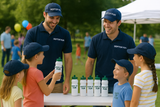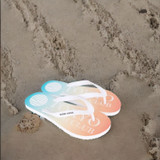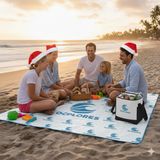Lessons from Limited-Edition Merchandising Success Stories
We’ve all seen it before—people lining up outside stores, setting alarms for midnight drops, or paying over the odds on resale sites. Limited-edition merchandise can trigger an overwhelming public response.
While great merchandising contributes to success, there’s one factor that consistently drives consumer excitement: exclusivity. The idea that something is only available for a limited time—or in limited quantities—creates urgency, heightens desire, and gives products a sense of uniqueness that’s hard to ignore.
In a crowded market, scarcity cuts through the noise—making limited-edition items feel more exclusive and desirable than similar products. Whether it’s fashion or fast food, many brands have benefitted from the power of scarcity created by a limited-edition drop. Here are some of our favourite takeaways from limited-edition merchandising success stories.
McDonalds x Travis Scott
In September 2020, an unexpected collaboration swept through McDonald’s across the U.S.: The Travis Scott Meal. For a month, McDonald’s featured Travis Scott’s favourite meal at each of their chains, giving customers the chance to eat just like Travis himself. While it wasn’t the first time McDonalds had partnered with a celebrity, it was the first time in decades - and with Michael Jordan the only celebrity to partner with the fast food chain before, Travis had some big shoes to fill.
Travis more than filled those shoes—the limited-edition partnership was a massive success, with some McDonald’s locations even running out of key ingredients. At the same time, merch designed by Travis and his Cactus Jack team sold out just as quickly, with many analysts crediting Gen Z for the overwhelming demand.
The powerful lesson in this successful limited edition merchandising campaign? Cultural relevance can fuel merch and brand campaign success. McDonald’s didn’t even need to change their menu items to make the Travis Scott meal a reality, but through this strategic celebrity partnership, they were able to successfully connect with a significant portion of their customer demographic.
Supreme
Founded in 1994, Supreme is a New York-based fashion label that’s used the power of limited releases to build itself into a cultural phenomenon. While most brands may opt for evergreen products to build rapport with their customers, Supreme’s brand strategy has seen limited-edition merchandise and products build a customer experience that’s fuelled by exclusivity, hype, and scarcity. Here, Supreme demonstrates how a simple shift in business model can propel brand growth, capitalising on the ‘fear of missing out’ that can drive significant levels of customer engagement.
By training their customers to expect new product drops at the same time of the week throughout each season, demand for merchandise has historically led to sold-out collections. Not only are there limited numbers of each new product, but there’s also the time pressure Supreme has created by never releasing the same piece of merchandise twice. Once it’s gone, it’s gone. For diehard Supreme fans, they have a small window of opportunity to get their hands on the new drop.
Supreme proves that scarcity is a powerful merchandising tool. By pairing predictable drop schedules with limited supply, the brand has consistently driven high engagement through its exclusive, hype-driven model.
Conclusion
There’s no one way to build a successful limited-edition merchandising campaign, but there are numerous examples of successful approaches that can fuel the fire of creative branded merchandise strategy. Whether it’s through the clever reuse of existing products (like McDonald’s x Travis Scott) or feeding the frenzy of exclusivity (like Supreme), brands who understand their consumers’ habits can generate powerful engagement through a limited-edition approach. Find a wide range of limited-edition branded merchandise that’s worth waiting in line for with Brandconnect.
Brandconnect blog: Insights, trends & merch tips
High-End Corporate Gifts That Build Brand Prestige
High-End Corporate Gifts That Build Brand Prestige In Executive Circles, Every Gift Is a Statement I...
Where to Buy Promotional Stubby Holders in Australia
If you’ve ever wondered where to buy promotional stubby holders in Australia, the answer is right he...
Trusted by Government: Promotional Merchandise That Delivers Results
Australian Owned. Proven. Reliable. When Australian government departments need reliable, creative,...
Slide Into Summer: Why Branded Thongs Are a Smart Promo Move
From the Beach to the BBQ: Promote Your Brand with Custom Thongs In Australia, thongs aren’t just fo...
Christmas & New Year Corporate Gifting in Australia: Smart for Business
The holiday season is more than just a time for celebration, it’s also one of the best opportunities...
The Best Branded Merchandise for Everyday Use
How to Choose Promo Products Customers Actually Use In today’s marketing landscape, utility is every...







